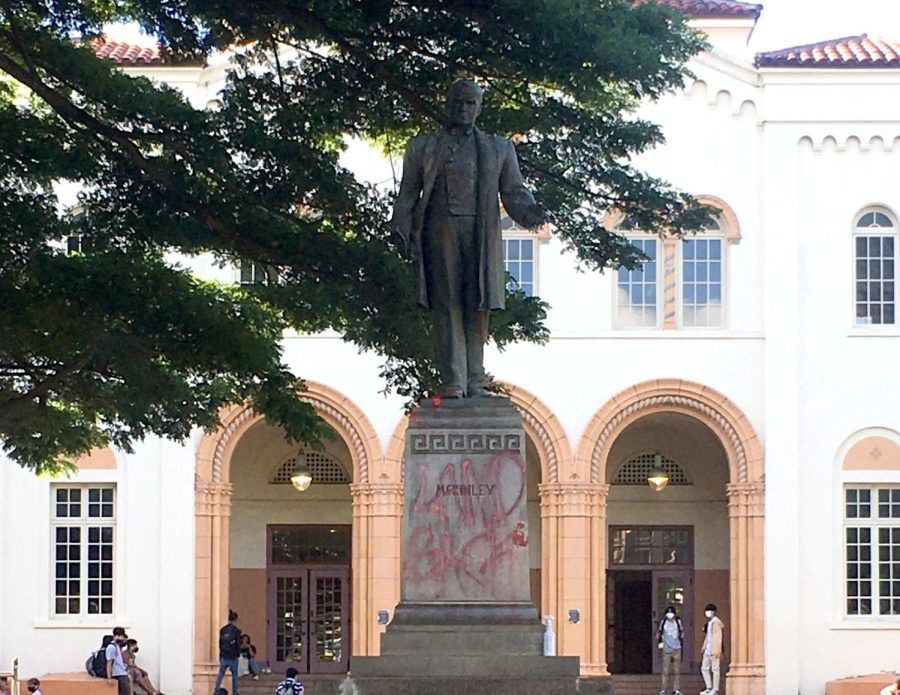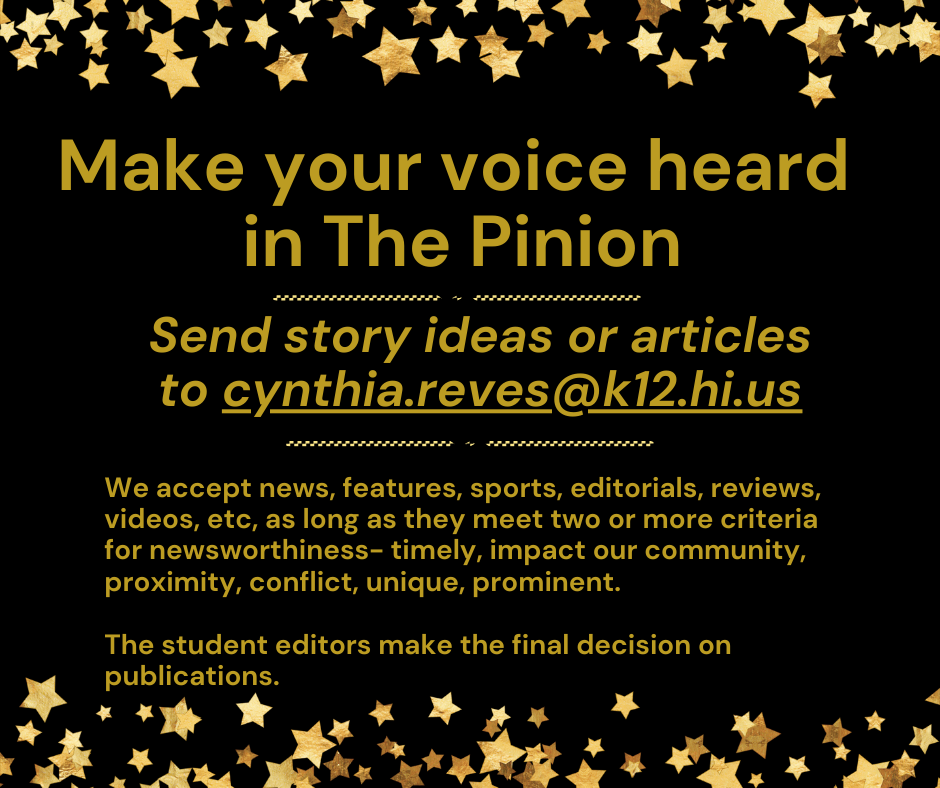Let’s Talk Monuments
By My Que Ly
The statue of President William McKinley was defaced in December 2021. This was not the first time it has been defaced.
May 18, 2022
In discussions of memorials, one controversial issue is the decision to keep monuments of problematic events or public figures up. On one hand, some people oppose the idea to keep such monuments up. On the other hand, others believe that taking down monuments will teach society to erase history instead of acknowledging its wrongdoings. Others even believe that money used to change or remove monuments could better be used to actively help communities affected by what or whom the monument represents. The debate surrounding monuments should not be focused solely on whether or not it should be taken down, but rather the further steps such as education and advocacy that should be pursued to help the indigenous communities affected by such statues.
Today, the public is becoming well aware of the history that surrounds figures that have hurt indigenous peoples, yet some choose to weaponize this realization to push forward the agenda that taking down monuments would “erase history.” Christopher Columbus is one prime example of a historical figure in American history that has been criticized for his actions against Native Americans. In “The Christopher Columbus Monument in Riverside Park,” Christopher Columbus is depicted standing heroically. Columbus and his followers have been largely criticized for colonizing the New World of Americas and pillaging Native Americans from their lands. While it is true that Columbus has had an impact on American history, putting a monument of him without an explanation of history can cause future generations to believe that he discovered America. Rather than preserving history, monuments that represent problematic figures perpetuate the hurt indigenous peoples continue to face today. People who believe that taking down monuments would “erase history” should ask themselves, “what are better ways to preserve history?” If the reasoning behind keeping monuments up is not educating the future generations, then individuals who believe in “preserving history” do not care about the actual issue at hand. There are better ways to remember historical figures–even problematic ones, but if people strongly believe that in keeping such monuments up, an educational piece needs to coexist with it. Similarly, a monument at President McKinley High School in Hawaii is facing public backlash. Ron Okamura, the principal of President McKinley High School testifies against the “HCR 179: Urging the Superintendent of Education to Request the Board of Education to Change the Name of President McKinley High School Back to the School’s Previous Name of Honolulu High School and to Remove the Statue of President McKinley from the School Premises.”
Principal Okamura opposes the resolution, arguing that taking the McKinley monument down and changing the school’s name would teach their students to erase history. The oval that surrounds the McKinley statue is well-respected on their school campus. It has been a long-standing tradition within the school for students to not cross the oval until they graduate. While the students, parents, and staff of the school have transformed the meaning of McKinley, it is not the same for the general public. People who do not have any connections with the school will continue to see President McKinley as the person who annexed the Hawaiian islands. Furthermore, the McKinley statue holds an annexation treaty, which is not historically accurate. President McKinley completely ignored the 21,000 Native Americans who signed the 1897 Petition Against the Annexation of Hawaii and signed the joint resolution–not a treaty. To have a statue that holds such a “treaty” does not accurately represent history. It is true that nothing can reverse the injustices caused by President McKinley; however, taking down the monument and renaming the school is the first of many steps to heal the community. Since McKinley High School has decided to keep the monument and name, education must coexist. If Principal Okamura and the staff of McKinley want students to learn the “bad side” of history, they must actively teach the wrong. To promote the idea that taking down the monument will erase history, teachers must keep their promise to teach every possible current and future student the history of annexation. While it is true that Modern History of Hawaii exists, there should be conversations that prompt students to think critically about how annexation has affected Native Hawaiians in the past and today. The conversation that surrounds the McKinley statue and the school’s name should not be up to just history teachers, it is up to each and every staff member.
Others argue that the debate that surrounds monuments is performative activism and does not help the bigger issue at hand. In “Waiting for Crazy Horse,” Kelly Looking Horse, a Sioux artist says, “there [are] probably better ways to help Indians than a big statue” in regards to the Crazy Horse memorial, a carving in South Dakota that symbolizes Crazy Horse, a Lakota leader. Kelly Looking Horse and some indigenous peoples believe that monuments do not need to be built at all because it does not actively help their community. For some indigenous peoples, a monument is not enough. The monuments do not stop the violence, voter suppression, murderers, and other countless oppressive practices that the indigenous community face. It is great that statues dedicated to the indigenous community are up, but it should not stop there. If people want to solve the problems Native Americans face, there needs to be legislation that protects the well-being of Native Americans rather than a superficial monument. However, if people strongly believe in keeping the monument up, an education piece that explains the purpose of the Crazy Horse memorial should coexist.
People who built the Crazy Horse memorial and other indigenous monuments should ask themselves: “what do we want the public to learn from this?” On the other hand, Sioux artists like Charlie Sitting Bull and Del Iron Cloud explain that “they were grateful at least that the memorial gave them free space to show and sell their work” (Downes). The Native American community is not a monolith, there is not one solution to fix the systemic oppression they face. However, many Native Americans believe that there is more that needs to be done. The resources used to build monuments dedicated to indigenous peoples could be used to assist Native families who live in reservation camps or push for a non-whitewashed Native American history to be taught in American schools. There are so many things that could be done. The conversation surrounding monuments should not be limited to whether they should be taken down or not. If both sides of the debate truly want to help the indigenous communities who have been hurt, they must plan a way to educate the public and advocate for their rights.
The debate surrounding monuments should not be solely focused on whether or not they should be taken down; however, keeping monuments up without explanation of the person’s impact shows that society is tolerating such controversial figures. If people truly care about “historical erasure,” they should be in the forefront of the debate and actively advocate for the education of the “bad” side of history and for indigenous people’s rights. If society truly wants to remember and honor such figures, education and advocacy for the indigenous community must be part of the process. Memorials serve no purpose towards educating the public if it does not explain the history or meaning behind them.




